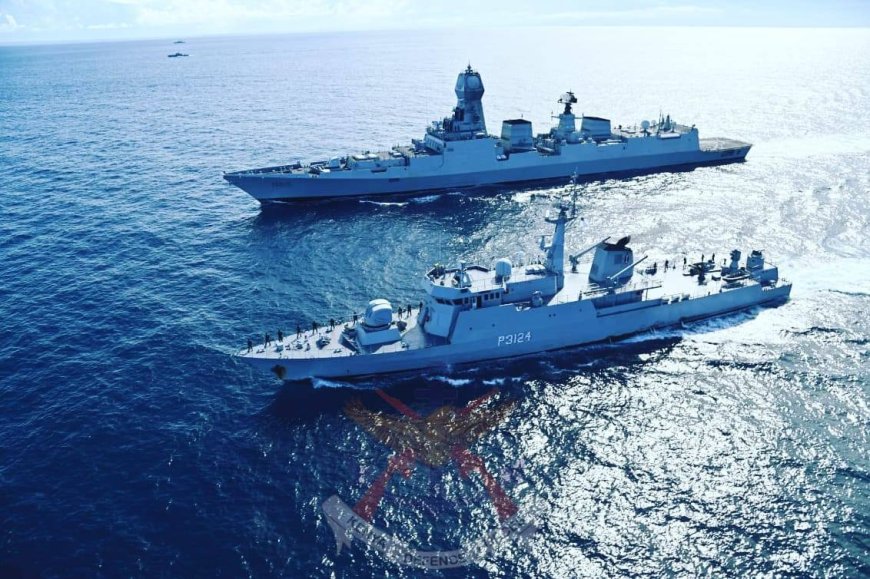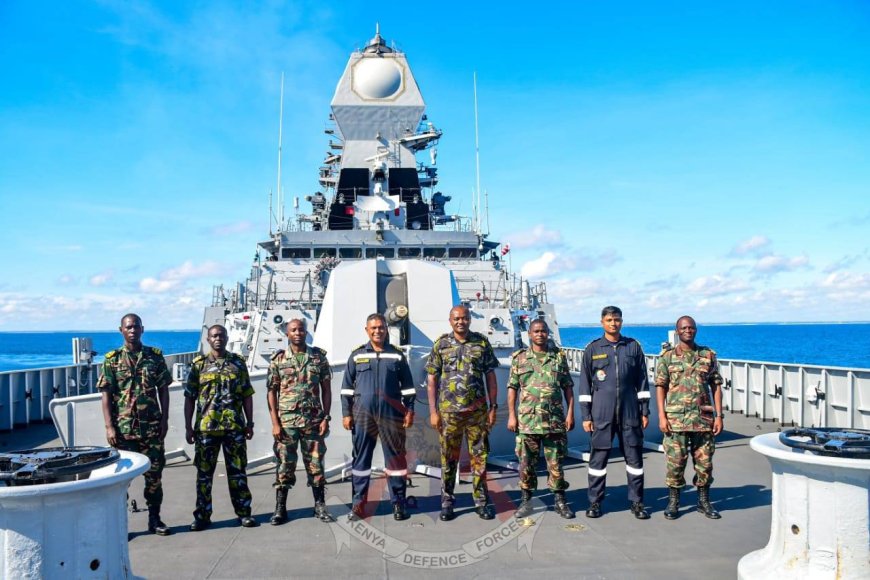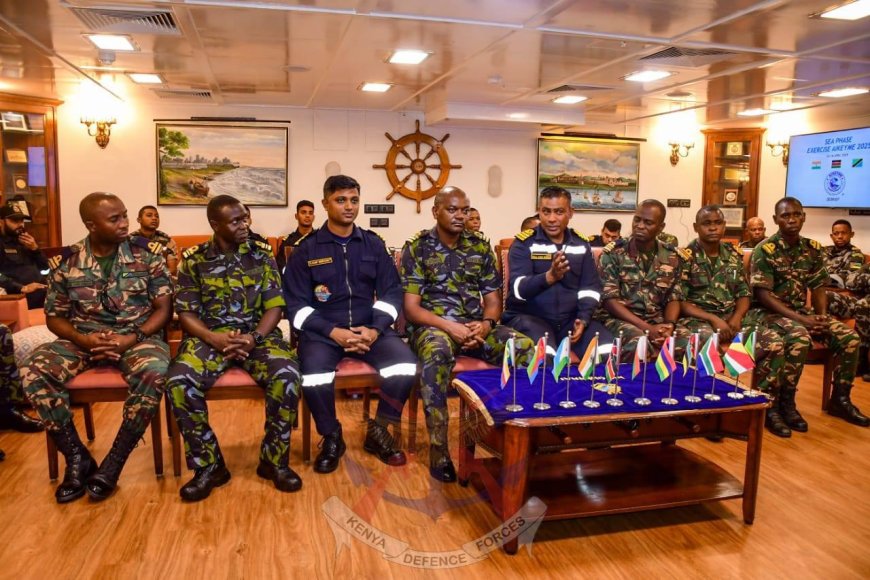Details: Kenya Navy Takes Part In High-Level Military Drills With India, Tanzania
The key event aimed to strengthen regional maritime security and promote cooperation among nations

The Kenya Navy has announced the successful conclusion of the Africa-India Key Maritime Engagement (AIKEYME) 2025 exercise, which took place on Friday, April 18, in Dar es Salaam, Tanzania.
According to a statement from KDF, the key event aimed to strengthen regional maritime security and promote cooperation among nations. It featured a range of complex drills and operations involving various participating navies.
Significant activities included Visit, Board, Search, and Seizure (VBSS) operations, which enhanced the teams’ capabilities in counter-piracy and maritime interdiction.
VBSS is a military and law enforcement tactic used by naval forces to intercept and inspect vessels at sea. The operation begins by making contact with the vessel (Visit), then moves to physically getting on board (Board).

A photo of military officials drawn from the Kenya Navy, Tanzanian Naval Command and the India Navy Service on Friday, April 18, 2025. /KENYA DEFENCE FORCES
Once aboard, the team checks for any illegal activity (Search), and if anything suspicious is found, they secure the vessel and detain those involved (Seizure).
Approaches to Towing (APTOW) drills were also conducted, focusing on maritime towing operations and ensuring that participating ships are capable of providing assistance during operational challenges. These drills prepare crews to safely and efficiently attach a tow line between ships, usually when one vessel is stranded or experiencing issues. They mimic real-life situations where a ship needs to be towed because of engine failure, combat damage, or running out of fuel.
The exercise starts with the approach phase, where the towing ship manoeuvres into position—either alongside or ahead of the disabled vessel—while maintaining a steady speed and safe distance. Crews then carry out the line transfer, using tools like messenger lines, heaving lines, or small boats to pass the towline across. Once the connection is secure, both ships sync up their speed and direction to keep the tow smooth and controlled.
In the statement, Kenya Navy Ships (KNS) JASIRI and KNS SHUPAVU, along with the Special Boats Unit (SBU), played pivotal roles throughout the exercise. Further, the event highlighted operational excellence and reinforced the collective commitment to safeguarding maritime security in the Indian Ocean.
"Commanding Officers from the Indian, Kenyan, and Tanzanian ships commended the professionalism and dedication of all participants, emphasising that exercises like AIKEYME 2025 are critical in building regional partnerships and enhancing maritime stability. The successful completion of the exercise underscores the importance of continued collaboration in addressing maritime security challenges," the statement read in part.







